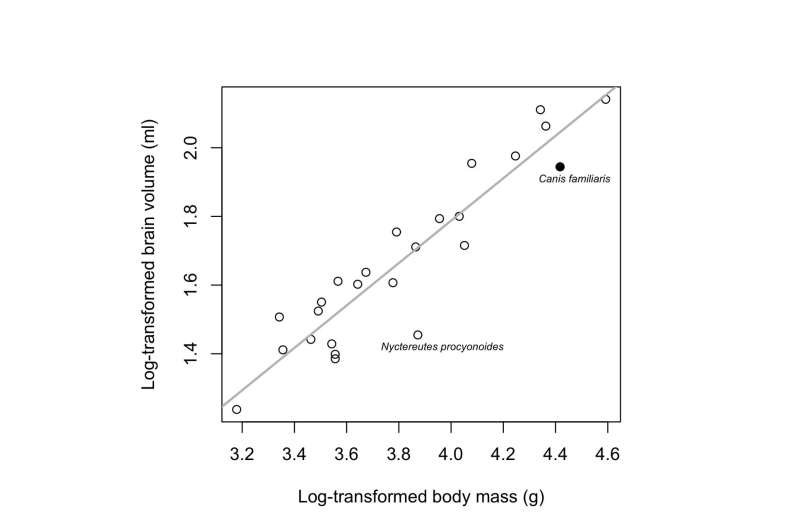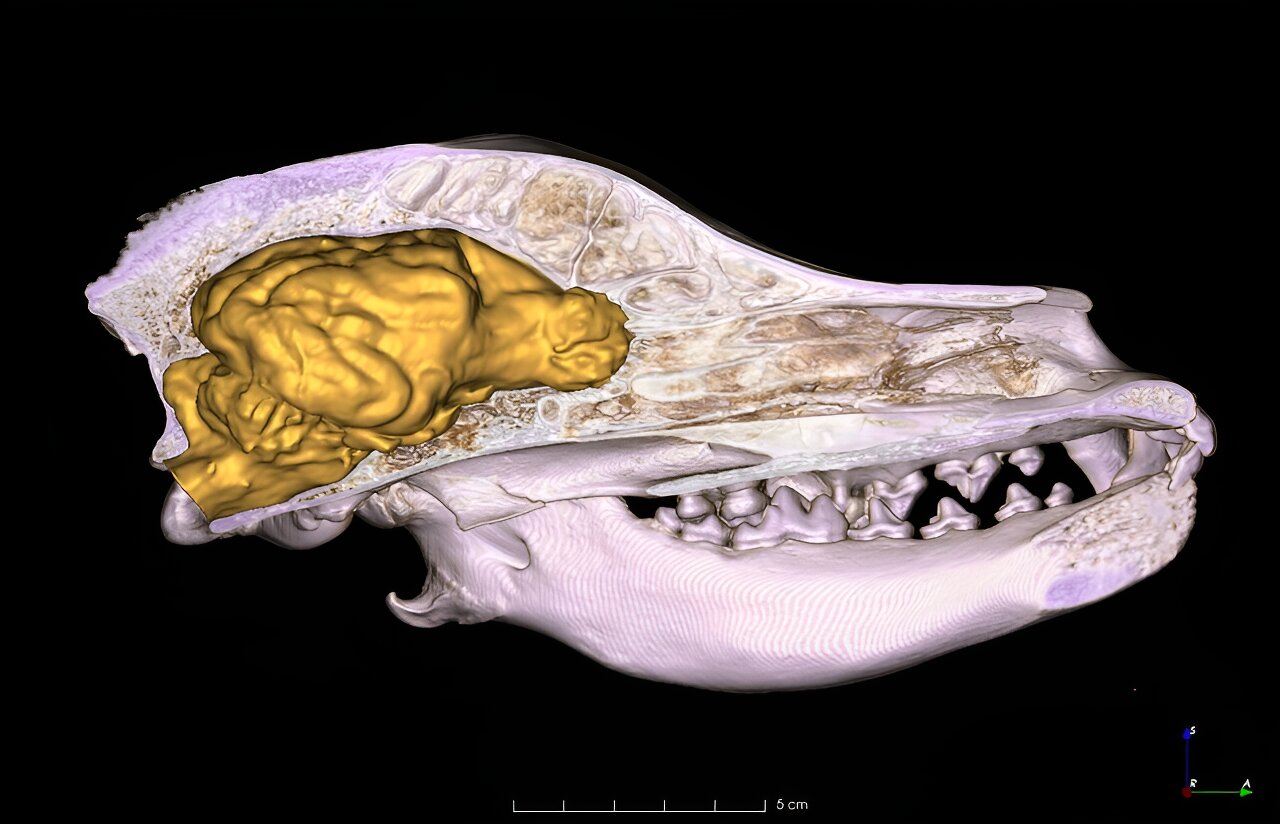A recent study, published in Biology Letters, challenges the long-held notion that domestication is the primary driver of reduced brain size in domesticated animals, specifically dogs.
Employing a phylogenetic comparative approach, László Zsolt Garamszegi from the Institute of Ecology and Botany, Center for Ecological Research, Hungary, and Niclas Kolm from the Department of Zoology, Stockholm University, Sweden, show that the domesticated dog does not exhibit an exceptionally small brain relative to its body size compared to other canid species, suggesting that domestication is not as unique an evolutionary force as previously thought.
The prevailing belief has been that domestication leads to a significant reduction in brain size due to relaxed selection pressures, such as reduced need for foraging, mating competition, and predator avoidance.
This phenomenon is thought to be a result of the decreased necessity for metabolically costly brain tissue in a domesticated environment. While domesticated dogs show a substantial decrease in brain size compared to their wild ancestor, the gray wolf (Canis lupus), this study aimed to determine if this reduction is exceptional when viewed in a broader phylogenetic context.
Garamszegi and Kolm analyzed brain and body size data for 25 canid species, including ancient dog breeds that are genetically closer to the ancestral domesticated dog.
Their phylogenetic predictions and allometric regressions showed that the reduction in brain size in domesticated dogs is not an unambiguous evolutionary singularity. The observed brain size in dogs fell within the expected range for most ancient breeds used in the study, suggesting that domestication is not uniquely influential in reducing brain size among canids.

Interestingly, the study found that the common raccoon dog (Nyctereutes procyonoides), which hibernates, is a more pronounced outlier in terms of brain size reduction. Hibernation, associated with prolonged periods of low metabolic activity and food scarcity, is hypothesized to constrain brain size evolution due to the high energy demands of large brains.
The raccoon dog’s significantly smaller brain size supports this hypothesis, highlighting that factors other than domestication, such as ecological adaptations like hibernation, can also drive reductions in brain size.
The study concludes that while domestication does contribute to brain size reduction in dogs, it should not be overemphasized as a uniquely powerful evolutionary force.
The findings suggest that other ecological and evolutionary pressures can similarly affect brain size and can mediate extreme variations in non-domesticated species as well. A more balanced and less human-focused perspective could refine our understanding of the complex interplay between domestication and brain size evolution in mammals.
The work of Garamszegi and Kolm might change how we interpret the evolutionary role of domestication.
More information:
László Zsolt Garamszegi et al, The reduction in relative brain size in the domesticated dog is not an evolutionary singularity among the canids, Biology Letters (2024). DOI: 10.1098/rsbl.2024.0336 , royalsocietypublishing.org/doi … .1098/rsbl.2024.0336
Provided by
Hun-Ren Ökológiai Kutatóközpont
Citation:
Domestication causes smaller brain size in dogs than in the wolf: Study challenges notion (2024, August 6)
retrieved 6 August 2024
from https://phys.org/news/2024-08-domestication-smaller-brain-size-dogs.html
This document is subject to copyright. Apart from any fair dealing for the purpose of private study or research, no
part may be reproduced without the written permission. The content is provided for information purposes only.

